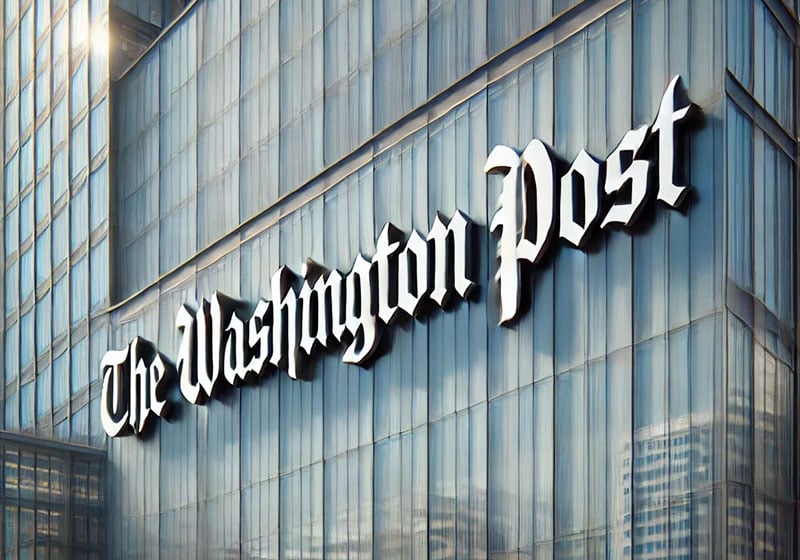Table of Contents
The Watergate affair, which led to the impeachment and resignation of president Richard Nixon in 1974, was the mother of all modern political scandals. Indeed, it’s the reason why the suffix “gate” is often used in baptising new controversies or conspiracy theories (think Gamergate or Pizzagate). And the investigation that brought down the president was spearheaded by journalists from The Washington Post, one of America’s oldest and most influential newspapers.
Founded in 1877 in Washington D.C., the paper has forever been a bastion of press freedom and is considered as one of the country’s newspapers of record, alongside The New York Times and The Wall Street Journal. Although traditionally a left-leaning liberal outlet, critics have accused the paper of moving rightwards in the wake of Donald Trump’s second electoral triumph.
Time to take a look inside America’s fourth best-selling daily*.
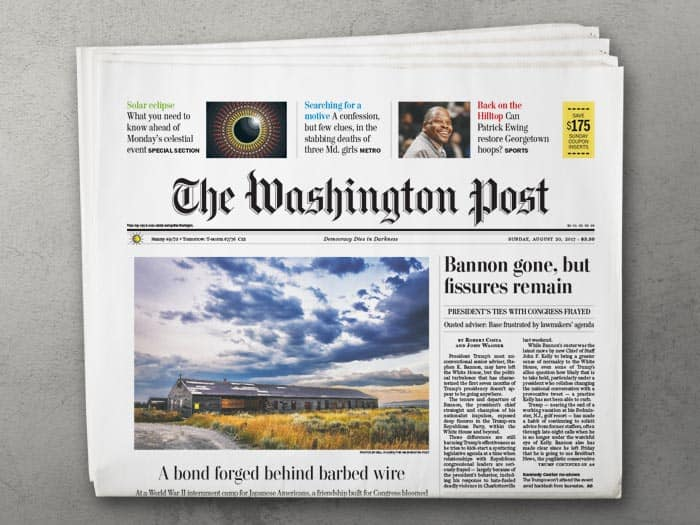
An identity rooted in tradition
Like a good whisky, The Washington Post (AKA WaPo or simply The Post) has a distinctive character that has aged gracefully over the years.
This can be seen in the paper’s masthead: written in black gothic type that harks back to the end of the 19th, it evokes authority and history without seeming old-fashioned or stuffy.

Since 2017, the paper has carried the slogan “Democracy Dies in Darkness” beneath the masthead. A favourite refrain of Bob Woodward, the Post journalist who broke the Watergate scandal alongside colleague Carl Bernstein, its adoption was seen by some as a riposte to Donald Trump’s frequent claims that the mainstream media was dishonest.
The Post has a formal yet elegant layout that’s easy on the eye. Published in broadsheet format, it uses plenty of white space between columns and headlines, with thin and subtle rules used to delineate articles.
In 1998, the paper underwent a revamp that involved shrinking the format slightly and re-organising content to fit the new size.
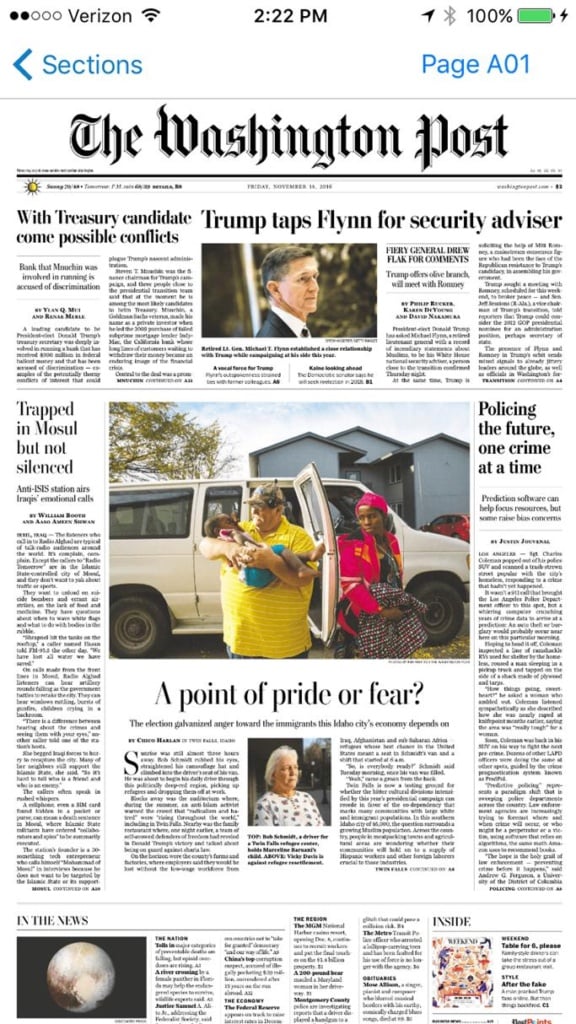
Graceful classical fonts
Like The New York Times, The Washington Post’s elegant and traditional appearance owes much to the fonts it uses.
As its headline face, The Post had used a standard version of Bodoni for years. But in a 1998 makeover, type designer Matthew Carter from Font Bureau created a modified version with subtle changes designed to bring it up to date: The Post’s design team felt that its capitals were too conspicuous and made the paper look dowdy. The result was smaller and slimmer upper case, as well as regular and bold weights in both roman and italics, plus further fonts for fractions.
The new typeface for headlines was fittingly named “Postoni”.
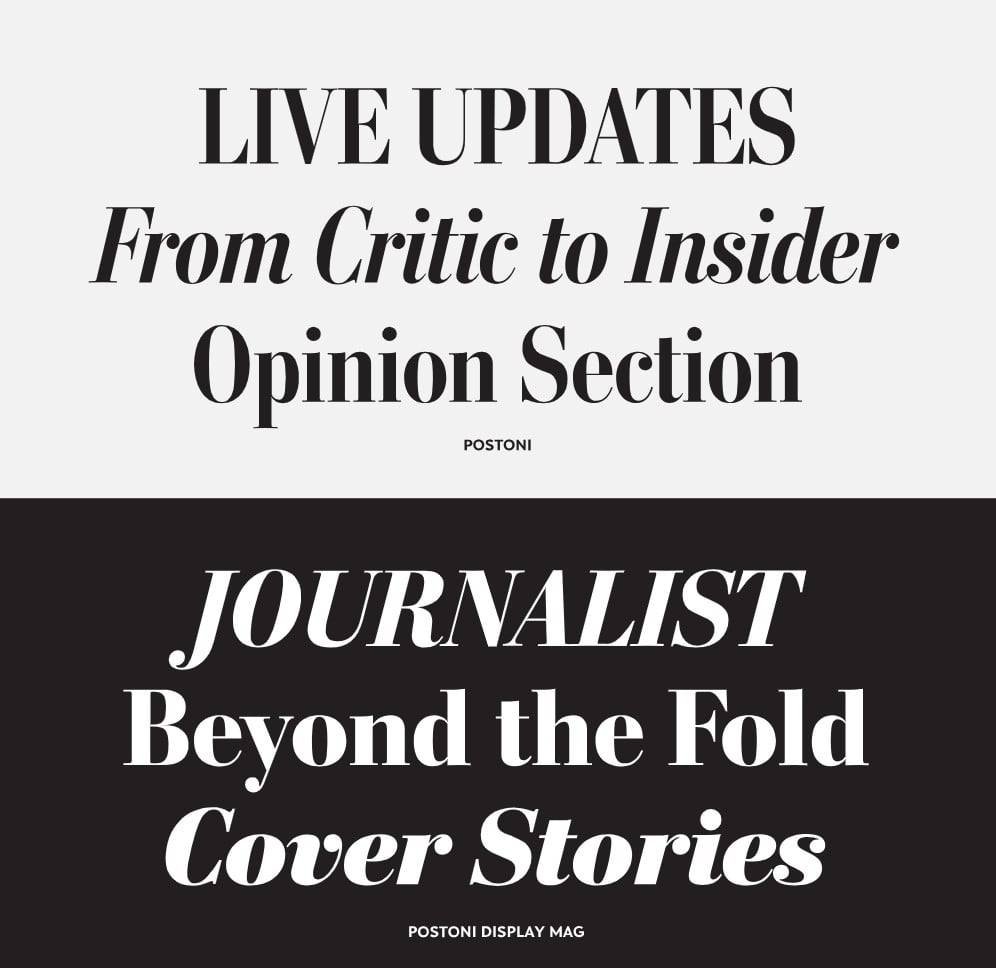
In 2009, further tweaks were made to improve legibility and harmonise print and digital versions.
In their 1998 revamp, Font Bureau also overhauled the Century Oldstyle typeface used for running text. Renamed “Postroman”, the new typeface was designed to fit narrower columns while maintaining legibility thanks to a slight increase in height.
Photographs and other graphics
There’s nothing particularly innovative about The Post’s use of images and illustrations. The front page usually carries a central, rectangular photograph occupying four column widths. In recent years, the picture has sometimes appeared halfway down the page, in a departure from the traditional position immediately below the headline.
As a newspaper with a strong tradition of investigative journalism, The Post has always preferred photographs to illustrations, with the latter reserved for the culture pages and supplements (Style, Outlook, Weekend, Food, Art, Book, etc.).

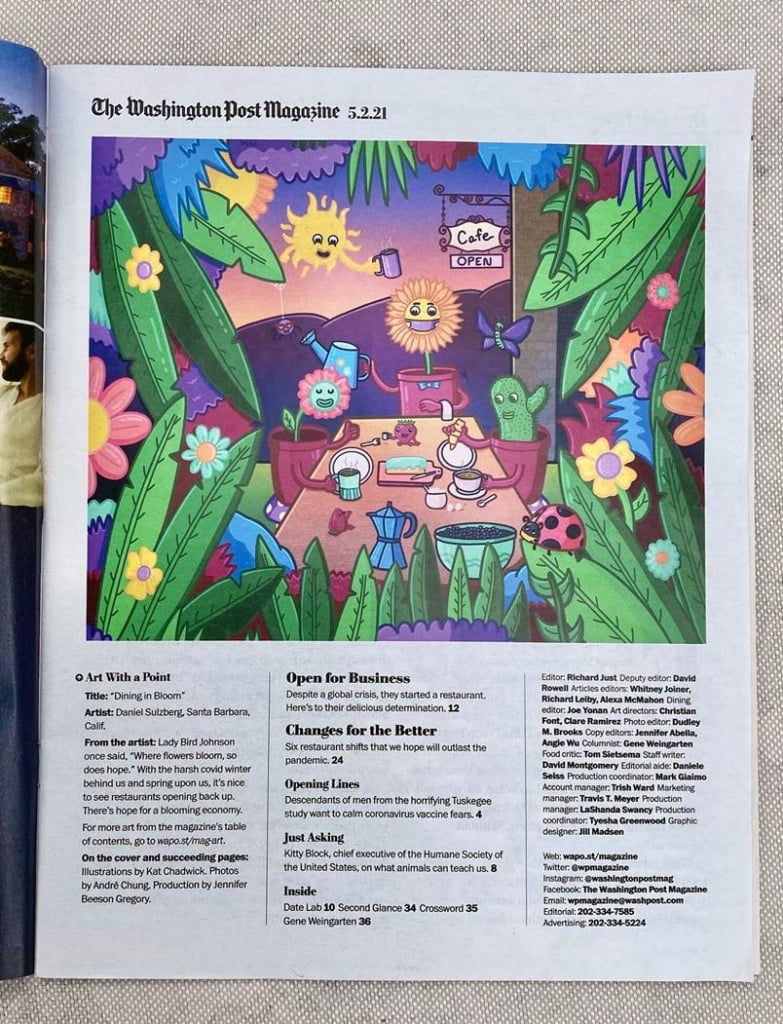
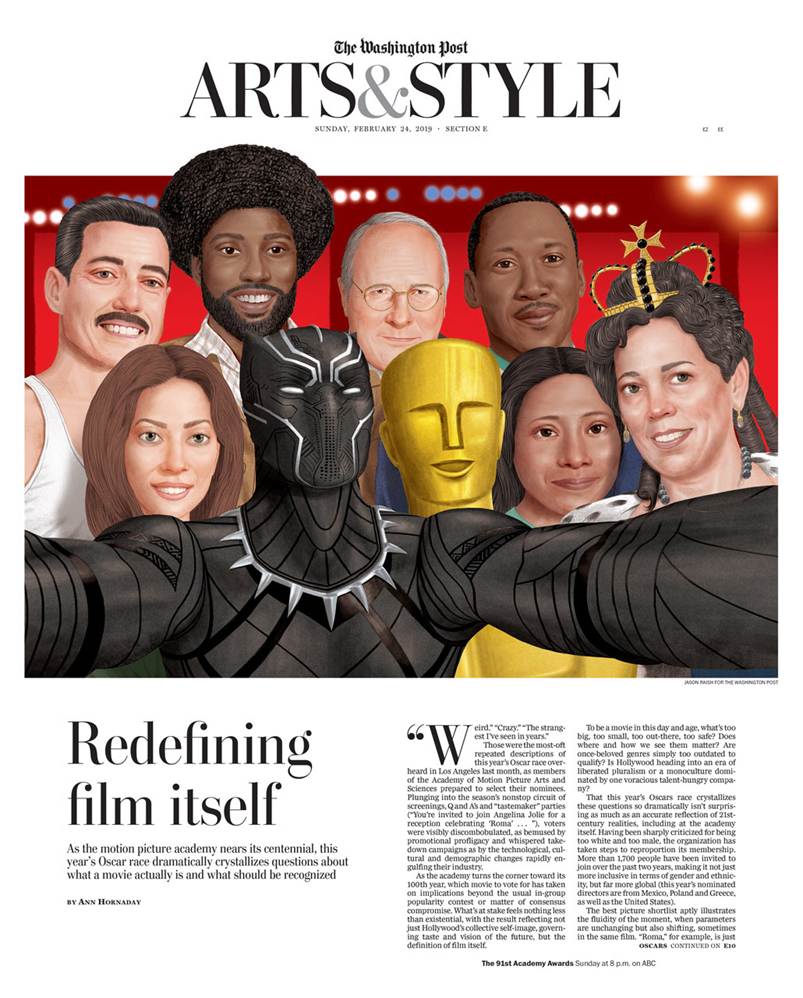
Infographics are used as explainers and feature more prominently in the digital edition, where they are used for compelling visual storytelling.
They are also used to great effect on the paper’s weather page.

Source: https://morangriffin.com/newspaper-washington-post-weather
A newspaper with heft
One of the country’s leading newspapers, The Washington Post has chronicled – and at times shaped – more than a century of America’s history. Over the years, its investigative reporting has even landed the paper starring roles on the big screen, most memorably in All the President’s Men (1976), Alan Pakula’s classic account of the Watergate scandal, and more recently in Tom McCarthy’s The Post (2017), which tells the story of the Pentagon Papers affair.
Its design aesthetic conveys heft and authority, while a judicious use of white space gives stories room to breath.
Thanks to its 1998 revamp by the masterful Matthew Carter, as well as subsequent spruce-ups, it remains an inspiration for newspaper designers, with its careful balance between text and graphics.
But like other legacy media, The Post faces challenges ahead, with circulation of its print edition likely to fall further. In Jeff Bezos, the paper has an owner with deep pockets, but the price for this financial security seems to be increasing interference in its editorial line. A case in point: Bezos recently decreed the paper would be “writing every day in support and defense of two pillars: personal liberties and free markets,” and that it would not be publishing “viewpoints opposing those pillars”.
- 2023 data from the Alliance for Audited Media
https://pressgazette.co.uk/media-audience-and-business-data/media_metrics/us-newspaper-circulation-2023/

